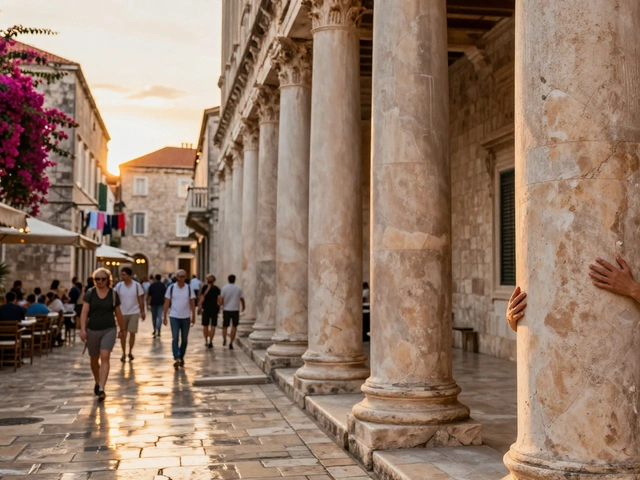City Break Budget Calculator
Plan Your Affordable City Break
Estimate costs for your next budget-friendly city trip based on the best-value destinations from the article.
Best Value Cities
Based on article data: May-October is cheapest for most European cities
Your Affordable Options
Enter your budget and dates to see which cities you can afford.
When you’re short on time and tighter on cash, a city break isn’t just a nice idea-it’s the smartest way to stretch your holiday budget. You don’t need a flight to Bali or a week in the Alps to feel like you’ve escaped. Some of the best city breaks in Europe, Asia, and even the Americas cost less than your monthly coffee habit. The trick? Knowing where to go when, and how to move around like a local.
Why City Breaks Beat Traditional Vacations
Think about it: flying overseas means airport transfers, baggage fees, and longer flights that eat into your actual vacation time. A city break? You can leave Friday night, be in another country by Saturday morning, and still have three full days to explore. And the savings add up fast. A two-night stay in Kraków costs less than a single night in Paris. Public transport is cheap or free. Street food beats restaurant bills. Museums often have free entry days. You’re not just saving money-you’re gaining more experience per dollar.
Top 5 Budget-Friendly City Breaks in 2025
Not all cities are created equal when it comes to value. Here are the five that consistently deliver the most bang for your buck this year.
- Valencia, Spain - Known for paella, but also for €1.20 metro rides and free beach access. The City of Arts and Sciences is stunning, and you can eat a three-course meal for under €15. July and August are busy, but May and September offer perfect weather and lower prices.
- Porto, Portugal - Wine lovers already know this one. A glass of port costs less than a latte. The Ribeira district is postcard-perfect, and the Douro River cruises start at €10. Hostels run under €25 a night. The city’s walkability means you don’t need a car-or even a taxi.
- Budapest, Hungary - Thermal baths, ruin bars, and grand architecture for pennies. A day pass for public transport is €4. The Széchenyi Baths cost €18, and you can eat goulash at a local market stall for €5. Even mid-range hotels are under €60 a night.
- Lisbon, Portugal - Yes, it’s getting popular, but it’s still one of Europe’s cheapest capitals. Tram 28 is €1.70. Pastéis de nata are €1.20. You can stay in Alfama for under €50. The city’s hills mean walking is part of the fun, and the views? Free.
- Kraków, Poland - This city is a masterclass in affordability. A guided walking tour costs €10 (tip-based). The Wawel Castle grounds are free to walk through. Pierogi at a family-run spot? €3.50. Hostels are €15. Even a beer in a historic pub is under €2.
When to Go for the Best Deals
Timing matters more than you think. The cheapest city breaks aren’t during holidays or summer. They’re in the shoulder seasons-April to May and September to October. That’s when hotels drop prices, flights aren’t sold out, and the crowds thin out. In Venice, for example, you’ll pay double in July. But in October, you can stroll the canals without elbowing through tourists and save 40% on lodging.
Even in cities known for being expensive, like Berlin or Prague, you can find deals if you avoid weekends. Midweek stays (Sunday to Thursday) are often 20-30% cheaper. Book early, but not too early. Prices usually drop in the last 14 days if rooms are still open.

How to Save Without Sacrificing Experience
You don’t have to sleep in a dorm to save money. Here’s how real travelers stretch their budgets:
- Stay outside the center - A 10-minute tram ride from Prague’s Old Town can cut your hotel bill in half. You still get the same city access.
- Eat like a local - Skip the restaurants with English menus and tourist photos. Look for places full of people with shopping bags. That’s where the real food is-and it’s cheaper.
- Use city tourist cards - Most cities offer cards that bundle transit, museum entry, and discounts. In Barcelona, the Hola BCN card gives you unlimited metro and free entry to 12 museums. It pays for itself in two days.
- Walk or bike - Most European city centers are designed for walking. Rent a bike for €5 a day and cover twice the ground. You’ll see more, spend less, and burn calories.
- Free attractions are everywhere - Amsterdam’s Jordaan district, Vienna’s St. Stephen’s Cathedral grounds, Barcelona’s Park Güell (free sections), and London’s Tate Modern-all free. Museums with pay-what-you-want days? Check their websites.
What to Avoid
Not every city that looks cheap actually is. Some places have hidden costs that ruin the budget.
- Amsterdam - Yes, it’s walkable and has great museums. But hostels are overpriced, and the city charges €5 to use public restrooms in the center. Beer costs €7. It’s not the worst, but it’s not the best value anymore.
- Barcelona in summer - The heat is brutal, prices spike, and pickpocketing rises. Go in spring or fall instead.
- Paris - Unless you’re staying outside the 1st arrondissement, you’ll pay double for the same experience. Stick to the 11th or 18th districts for better value.
- London - It’s expensive, period. But if you must go, use an Oyster card, eat at markets like Borough or Broadway, and skip the London Eye. The view from the Tower Bridge walkway is just as good-and free.
Real Traveler Tip: The 72-Hour Rule
One of the most effective ways to make the most of a short trip? Stick to a 72-hour plan. Pick one neighborhood to stay in. Walk everywhere. Eat three meals there. Visit one major attraction per day. Don’t try to do everything. You’ll feel rushed, spend more on transport, and burn out. Instead, sit in a café, watch people, and let the city reveal itself slowly. That’s how you remember a trip-not by how many sights you checked off, but by how deeply you experienced it.
Final Thought: It’s Not About the Destination
The best city break isn’t the one with the most Instagram spots. It’s the one that lets you feel like you’ve truly left your routine behind-without draining your bank account. Whether it’s sipping wine by the Douro in Porto, eating pierogi in a Kraków basement, or wandering the backstreets of Lisbon at sunset, those moments cost less than you think. All you need is the right city, the right timing, and the willingness to move slowly.
What is the cheapest city break in Europe?
Kraków, Poland, is consistently the cheapest. You can stay in a clean hostel for under €15, eat full meals for under €5, and get around on free walking tours or €4 public transport passes. Even the major sights, like Wawel Castle and the Main Market Square, are free to explore. It’s hard to beat for value.
Can you do a city break on a $200 budget?
Yes-if you pick the right city and travel smart. For example, a round-trip flight to Budapest from many European cities costs under $100 if booked early. A hostel night is $15-20, meals are $5-7, and public transport passes are $5. That leaves room for a thermal bath, a river cruise, and a few souvenirs. Stick to the essentials, avoid tourist traps, and you’ll be fine.
Is it cheaper to fly or take a train for a city break?
It depends. For short distances under 4 hours, trains are often cheaper and more convenient. A train from Paris to Brussels costs less than a budget flight when you add baggage fees and airport transfers. Trains also drop you in the city center, not an hour away. For longer trips, flights can be cheaper-but only if you book early and avoid peak times.
What’s the best month for a cheap city break?
September and October are the sweet spot. Summer prices drop, winter hasn’t hit, and the weather is still pleasant in most European cities. You’ll find fewer crowds, lower hotel rates, and better flight deals. May is also great for northern cities like Berlin or Copenhagen.
Are city breaks worth it for solo travelers?
Absolutely. Solo travelers often save the most because they don’t have to compromise on choices. Hostels are social and cheap. Public transport is easy to use. Many cities offer free walking tours designed for solo travelers. You can eat when you want, go where you want, and stay as long as you like-all without needing to coordinate with others.






